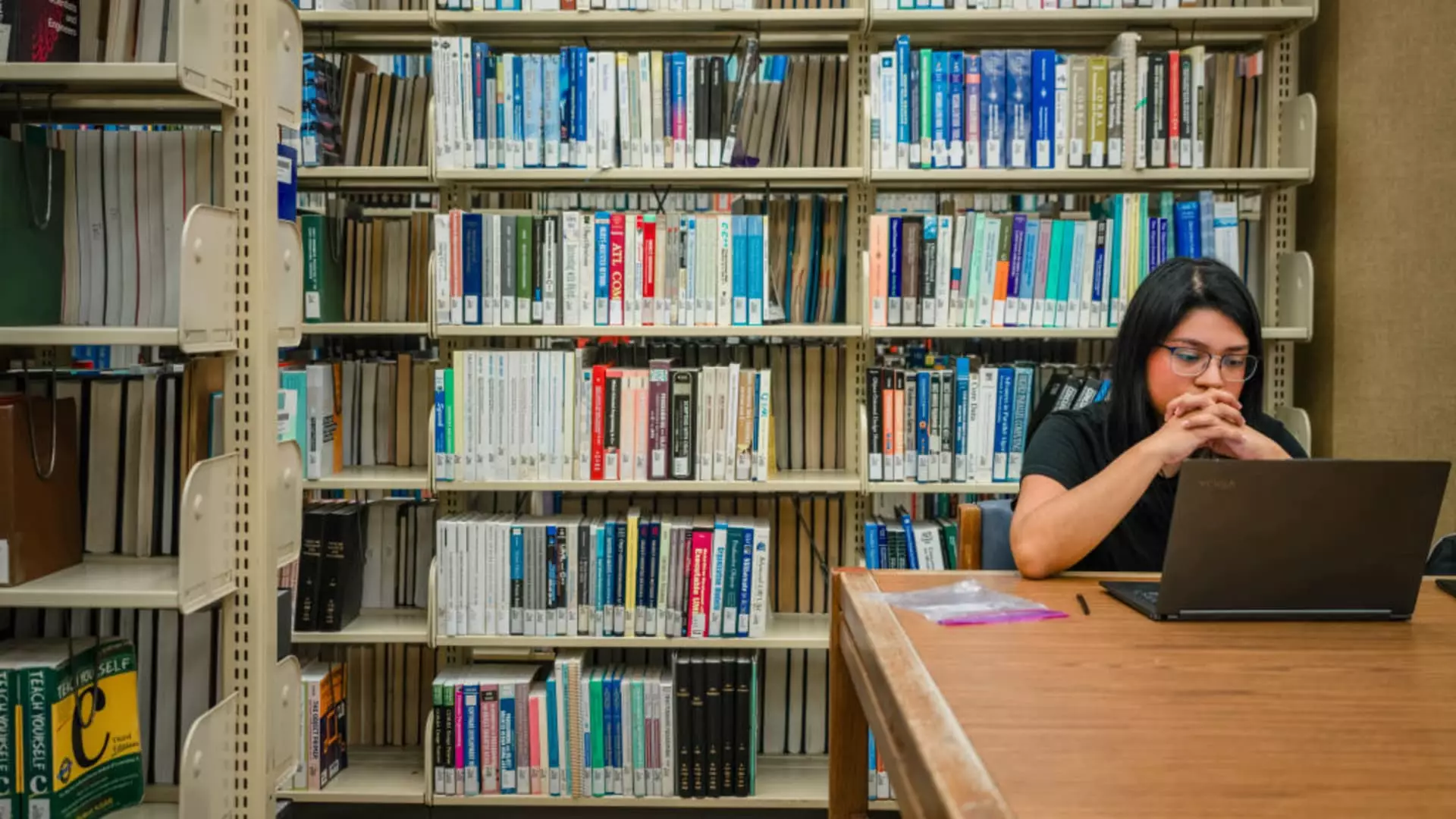In an era where college costs continue their relentless ascent, federal student loans have historically served as a lifeline for millions of students seeking upward mobility. However, the recent legislative overhaul under President Donald Trump’s administration signals a stark departure from the traditional model of accessible higher education funding. While purportedly aimed at reigning in over-borrowing and curbing spiraling tuition inflation, these sweeping caps threaten to restrict access, especially for those aspiring to enter vital professional fields. The underlying risks embedded within these policy shifts merit close scrutiny, especially considering the long-term implications for social equity and economic mobility.
The Real Impact of Borrowing Caps on Aspiring Professionals
One of the most profound changes is the introduction of a lifetime borrowing limit of $257,500 for federal student loans. While superficially reasonable, this cap could prove detrimental for students entering high-cost, high-stakes professions like medicine, law, dentistry, and environmental engineering. The average medical student debt exceeds this threshold well before graduation, highlighting the disconnect between policy and reality. By capping graduate and professional degree borrowing, the legislation risks making it nearly impossible for students from modest financial backgrounds to pursue careers in critical sectors. Instead of fostering opportunity, the policy risks creating a new barrier for those seeking social mobility through professional education.
Moreover, the elimination of Grad PLUS loans disables a vital avenue for students in advanced degree programs to bridge financial gaps. Without this safety net, students will likely be forced into a difficult choice: either accept substantial private debt or forego their educational aspirations altogether. This will disproportionately impact marginalized populations and lower-income families who rely heavily on federal aid to access elite professional programs. The policy, rather than democratizing higher education, subtly shifts the burden onto private lenders, who are inherently less regulated and less equitable in their lending practices.
The Hidden Costs of Shifting to Private Loans
The pivot from federal to private loans introduces a dangerous new terrain for students. Private lenders rely heavily on creditworthiness, often excluding those with imperfect credit histories or inconsistent income — demographics that group more heavily among low-income and minority students. This potentially widens the racial and socioeconomic gap in higher education access.
Already, private student loan originations are on the rise, with an 8.6% increase in just a year. This trend isn’t coincidental; it’s a direct response to federal lending restrictions. Private loans tend to carry higher interest rates, fewer borrower protections, and less flexible repayment options — all factors that can trap students in long-term debt cycles. The policy essentially pushes students toward a more precarious borrow-and-pay future, undermining the stability and safety provided by federal programs.
Furthermore, this shift threatens to amplify debt burdens for those who do manage to secure private funding. The traditional safety net of federal debt forgiveness, income-based repayment options, and borrower protections will not be available. As a result, graduating students may find themselves financially vulnerable for decades, with limited pathways for debt relief or manageable repayment.
Potential Consequences for the Economy and Social Mobility
The implications extend beyond individual finances into the broader fabric of economic opportunity. The policy’s design risks discouraging college participation among disadvantaged groups, fostering educational stratification that entrenches socio-economic divides. If fewer students, especially from low-income backgrounds, can afford professional degrees, the nation risks losing a diverse pool of talent essential for innovation, healthcare, legal justice, and public service.
Additionally, a constrained pipeline of qualified professionals, particularly in critical sectors like healthcare, exacerbates existing shortages. David Skorton’s warning about worsening the doctor shortage is a sobering reminder of the policy’s real-world consequences. A diminished supply of trained professionals has the potential to deepen inequalities in healthcare access and quality, disproportionately affecting underserved communities.
From an economic perspective, attempting to curb generous borrowing without addressing underlying cost inflation might have unintended repercussions. If students are forced into private loans or outright deterred from pursuing higher education, the long-term gains of a well-educated workforce could be compromised. Innovation, productivity, and overall economic growth hinge on accessible, affordable higher education — a principle this policy seemingly undermines.
A Center-Left Perspective: A Call for Balance and Fairness
From a center-wing liberal standpoint, these measures appear shortsighted and misguided. While tackling the spiraling costs of student debt is necessary, the approach chosen by this legislation overlooks the importance of social equity and opportunity. Instead of wielding loan caps as a blunt instrument that risks penalizing those with the most to gain from higher education, policymakers should seek targeted solutions.
Investment in public universities, expansion of grants, and repayment reform could mitigate the damage caused by rising tuition and stagnant federal aid. Such measures ensure that the promise of higher education remains accessible, especially for those who aspire to high-impact professions but lack the means to fund them. The current policy gamble, however, seems to abandon these vital reforms in favor of restrictive caps that threaten to entrench inequality.
In a society that prizes upward mobility and social justice, it’s critical to recognize that education remains one of the most potent tools for leveling the playing field. Policies that limit access and shift risk toward private lenders may yield short-term fiscal savings but risk eroding the fundamental promise of opportunity that higher education represents. Instead of capping futures, we should aim for smarter, more inclusive strategies that empower rather than restrict.
—
Note: This article critically examines the implications of the new student loan policies, emphasizing long-term societal and economic risks, especially in the context of social equity and opportunity. It advocates for a balanced, fairness-oriented approach aligned with center-wing liberal values.


Leave a Reply